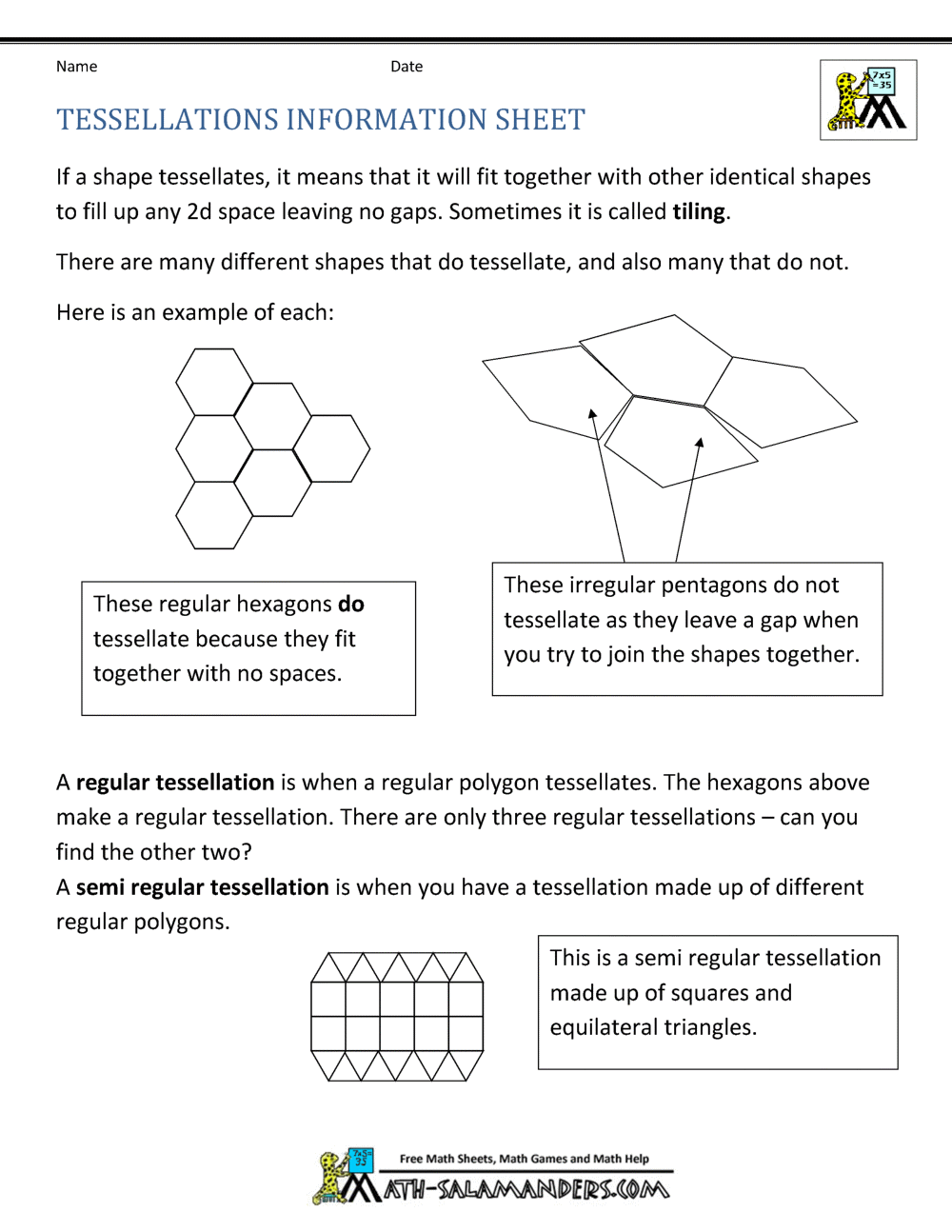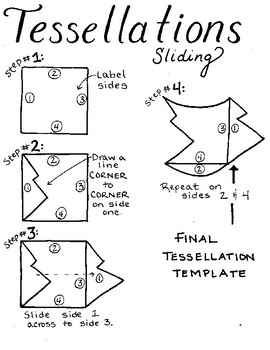
You can give a name to a tessellation by focusing on the vertex and noting the side of all the structures that converge at the vertex at the same time. The point where two shapes meet, also known as the corner point, is referred to as the vertex. It follows that there are only three distinct types of regular tessellations: those constructed from squares, equilateral triangles, and hexagons. They are used rather frequently in works of art, patterns for clothing, designs for pottery, and blown glass windows. These days, tessellations are employed for the floors, walls, and ceilings that are found inside buildings. In addition, the tessellations that are used in architecture may be seen at Fatehpur Sikri. The Alhambra Palace in Granada, which is in the southern region of Spain, is an example of a Muslim edifice that hints at the presence of tessellations. Tessellations, which are miniature quadrilaterals used in computer games and in the construction of mosaics, were exploited by the ancient Greeks. Tessellations had been tracked all the way back to the ancient civilizations, where they were first discovered (around 4000 BC). They frequently exhibit certain qualities that are tied to their place of origin in some way. There is evidence that tessellations were used in a variety of ancient cultures across the world.

The word “tessellation” originates from the Latin verb tessellate, which translates to “to pave,” or the word “ tessella,” which refers to a little, rectangular stone. The only rule is that all of the sides must fit together perfectly, with no empty spaces or overlap. But you can also make them by mixing different geometric shapes (e.g., hexagons and squares), to make tessellating patterns.

Generate Tessellations performs the function of the Generate Tessellation geoprocessing tool.As shown in the figure above, triangles can be used to make a tessellated pattern. If you are trying to aggregate points or summarize features in a tessellated grid, Aggregate Points and Summarize Within have built-in options to create tessellations. Other tools may be useful in solving similar but slightly different Use Generate Tessellations to create tessellations determined by a specified extent, shape, and size. These distortions are part of the display only and do not The result is projected to Web Mercator forĭisplay (the default) or to the projection of your custom basemap.Ī Web Mercator projection may cause your results to appearĭistorted, especially for large bins or bins near the polar Projection and parameters are chosen based on the specified geographic extent. Specified size dimensions to ensure that the sizes are equal andĪppropriate for the area of interest. In a custom, area-preserving projected coordinate system using the The distance is calculated as follows, where d is the value of the distance parameter: The size of each tessellation feature or bin can be calculated by specifying a value to represent the area for each bin in square units or by specifying a distance value. The letters in the IDs represent the columns and the numbers represent the rows, as shown in the following image: The format for the IDs is A-1, A-2, B-1, B-2, and so on. The GRID_ID field provides a unique ID for each feature in the output feature class. The output features contain a GRID_ID field. The extent of the tessellations that will be generated is determined by the Define Extent parameter, which can be the current map extent, the extent of an existing layer, or the extent of an interactively drawn study area. The Use current map extent parameter is unavailable for Generate Tessellations. To record each artifact, a grid of tessellated features is created to cover the entire study area to index and record the precise location of the artifacts.
Making tessellations full#
Generate Tessellations can be used to automatically create a dataset of appropriately sized bins for the full study area.


For reforestation projects, foresters need to divide harvested areas into bins, or regularly shaped areas, to understand the amount of seedlings and resources needed to reforest the area effectively.The Generate Tessellations tool creates tessellations, or bins, determined by a specified extent, shape, and size. To learn more, see Generate Tessellations ( Map Viewer). This tool is now available in Map Viewer, the modern map-making tool in ArcGIS Online.


 0 kommentar(er)
0 kommentar(er)
